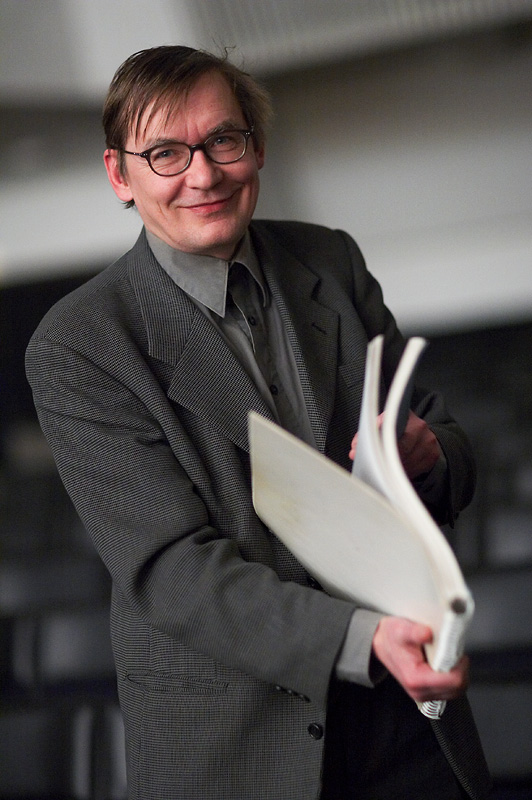Gilbert, Philharmonic explore new music from Scandinavia

Kalevi Aho’s Chamber Symphony No. 2 was performed at the New York Philharmonic’s “CONTACT!” concert Saturday night.
The title on the program for Saturday night’s CONTACT! concert at the Metropolitan Museum of Art read: “The New-Music Series of the New York Philharmonic.” From its inception, CONTACT! has blurred the understanding of the term ‘new music,’ and that has been musically mostly successful, while philosophically the concerts have tended to consolidate the classical tradition, rather than expand it.
The most obvious meaning of “New Music” is that which is contemporaneous, newly written and/or music of our times. The Philharmonic, under music director Alan Gilbert, has been solid in this regard, instituting a composer-in- residence position and inaugurating their Biennial of newly made music last season.
What was most remarkable about the music performed Saturday night was how unremarkable were its forms, structures and aesthetics. That is a good thing in that it reveals that newly made pieces from accomplished composers can be grasped and remembered. They have an effect, even if they are not understood (and since nobody understands music like the late Beethoven string quartets, perhaps understanding is superfluous).
There was a geographical theme: Scandinavia. Alan Gilbert conducted Per Nørgard’s Cello Concerto No. 2, “Momentum,” with Eric Bartlett as soloist, and Kalevi Aho’s Chamber Symphony No. 2. After intermission, Philharmonic assistant conductor Courtney Lewis led performances of Kaija Saariaho’s Terre Memoria, a string orchestra arrangement of a piece she originally wrote for the Emerson String Quartet, and The White Angel, composed by Duro Zivkovic. All but Aho’s were New York premieres.
The music came with abundant tradition and context. Ligeti stood most prominently in the background, as did Shostakovich and Stravinsky. Nørgard—the most recent recipient of the Philharmonic’s Marie-Josée Kravis Prize for New Music—and Zivkovic blur the harmonies with quarter-tones and ad lib glissandos, but these are standard tools, and their pieces have firm tonal centers (C Major for The White Angel).
Nørgard’s cello concerto is lyrical rather than athletic, and the two cadenzas stand out as explorations of sound: the first matches perfect intervals in the cello against sustained notes on the vibraphone, while the second has the cello sustaining pitches against a vibrating quarter-tone background. There’s a consistent premium on the beauty of consonance, the eerie satisfaction of hearing a quasi-tonal line, inflected with quarter-tones, resolve to a single pitch in the ensemble. Stravinsky-like rhythmic passages suffered from a diffusion of energy, the only less-than-superb playing from the musicians all night.
The White Angel surrounds the piccolo trumpet, skillfully played by Matthew Muckey, with colorful and lovely imagism.
The string works by Aho and Saariaho left the deepest impressions. Terra Memoria is an exploration of loss and remembrance, shaped like an arch. It begins with gently rocking phrases suspended over pedal tones, recalling Une barque sur l’ocean, then builds to a point of dense near-anguish. It is intense and powerful music.
Aho’s Chamber Symphony doubles down on those qualities. This is an excellent piece of music, expressionistic and through-composed. The music vibrates with an urgent need to communicate, and balances the effects of force and refinement, shouting and whispering. Piquant extended chords give way to a halting, haunting, minor-key waltz by the violas, phrases are passed like a murmur through the low strings. In the final section, there are gorgeous sonorities that have a cutting edge, and the final sound is that of sliding, col legno tones in the basses. Gilbert and the musicians played this so well that one wanted to immediately hear it again.
And that is the only complaint for the concert—since it’s not a subscription program, it won’t be repeated, and listeners won’t know what they’re missing.
The New York Philharmonic’s next CONTACT! concert is 7:30 p.m. May 11 featuring new music from Italy. nyphil.org


